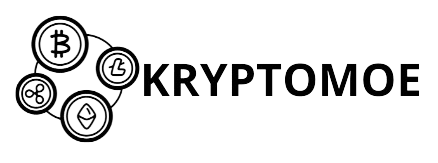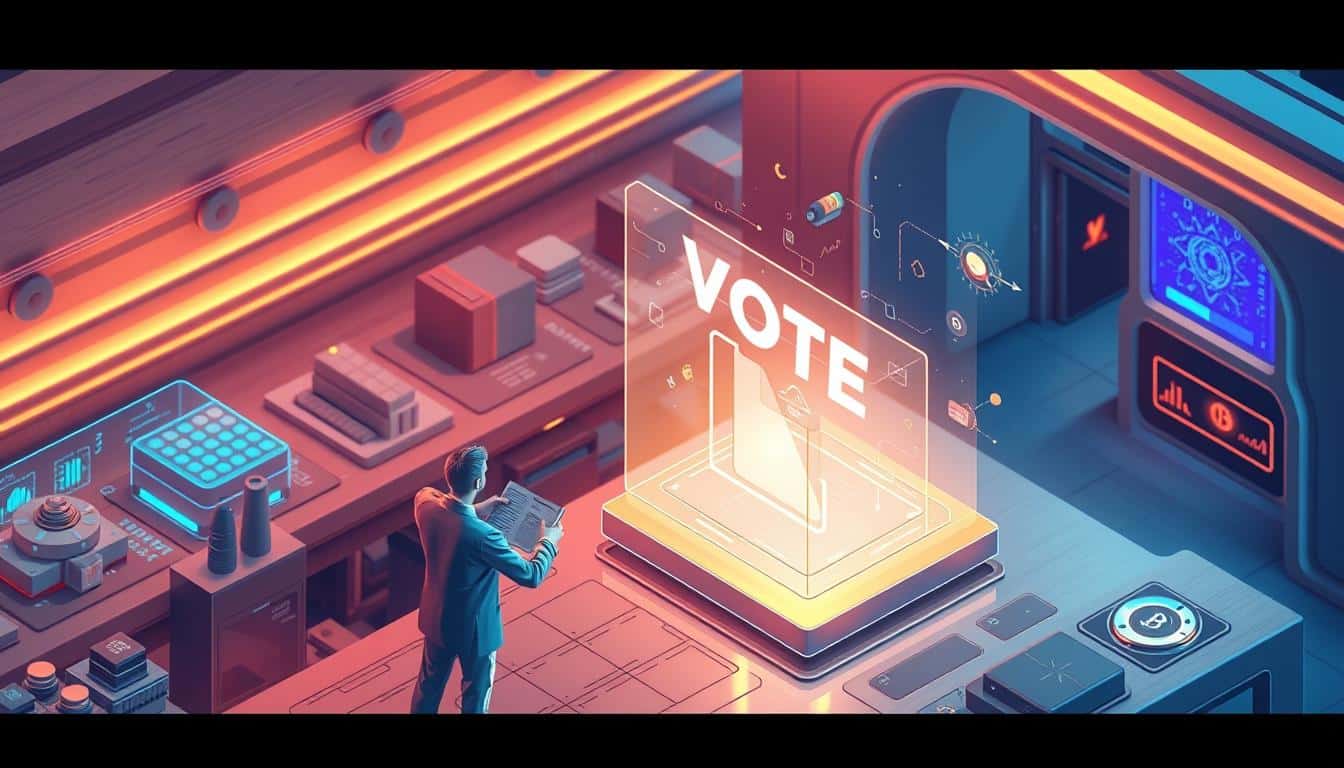More than 70% of big on-chain governance proposals in 2024 failed to get enough votes the first time. This surprising fact shows that token voting is crucial. It impacts real outcomes in protocols but often faces difficulties.
My insights come from real experiences: studying DAO whitepapers, voting on Uniswap, and following votes on Snapshot and on-chain. This article is an educational guide on token voting in DeFi, why it’s important, and how the current market and legal environment affect those building and voting.
Understanding DeFi governance is more than just saying yes or no. It connects protocol tokens with the power to make decisions. This connection influences who holds tokens, legal issues, and working with other systems. We’ll talk more about Aave and Uniswap soon. For now, understand that legal debates and changes at the CFTC pressure design decisions.
I’ll cover technical stuff like voting contracts and quorum rules, and also give tips on participating. Tips include using Ledger or BitGo for keeping your tokens safe and monitoring voting statistics. You’ll find straightforward language, some tech terms, and real observations from governance discussions.
Key Takeaways
- Token voting in DeFi links decision-making power to protocol tokens and is key for DAOs.
- For active participation, secure storage of tokens is crucial—think hardware wallets and multisig setups.
- Regulatory talks, like the Clarity Act, are influencing how governance models are shaped.
- Getting enough voters is hard: many proposals don’t meet the needed vote count on their first try.
- This piece outlines how token voting operates in DeFi projects and its significance for future decisions within protocols.
What is Token Voting in DeFi?
The first time I came across a forum thread about MakerDAO, it sparked a big debate. This thread showed me how token voting connects code and community in governance. Simply put, token voting lets people holding a governance token vote on big decisions. These can be about changing the rules, updating contracts, moving funds, or setting new guidelines.
DeFi governance started as a way for decentralized groups to make decisions together. Many projects made it easy to go from discussing an idea to voting on it officially. For example, MakerDAO votes can change how much collateral is needed. Votes in Uniswap and Aave have altered how the system works and how fees are handled. This path from forum debate to actual changes in the system shows how governance works in DeFi.
People holding tokens can vote in several ways like delegating their vote, locking their tokens, or voting directly. In DeFi, the amount of tokens you have usually decides how much your vote counts. This has sparked discussions on what’s fair. I’ve seen more people vote when there’s a lot at stake, like when more value is locked in or when big institutions show interest.
Why does voting with tokens in DeFi matter? It spreads out control and makes sure users and the system’s goals are aligned. On-chain voting is transparent, making it easier to check and harder to mess with. But, real-world politics can still influence what gets proposed for a vote. Government regulations can push certain proposals forward, quickly changing what’s important.
How votes turn out can also be affected by how secure and easy it is to vote. Better hardware wallets and practices for holding large amounts of tokens safely mean big players can vote without worry. This changes how power is distributed in DeFi governance, especially when big institutions are involved.
Here’s a quick guide that shows how different DeFi projects handle governance and what it means for those taking part.
| Protocol | Governance Token Role | Voting Mechanism | Notable Outcome |
|---|---|---|---|
| MakerDAO | MK R holders set risk parameters and collateral types | On-chain proposals with quorum and executive votes | Collateral portfolio adjustments during market stress |
| Uniswap | UNI holders vote on fee changes and treasury grants | Delegation and snapshot-style off-chain proposal stages | Tokenomics tweaks and ecosystem fund allocations |
| Aave | AAVE holders govern risk parameters and upgrades | Governance forum to on-chain execution with time delays | Parameter changes to lending rates and collateral factors |
| Compound | COMP holders propose and vote on protocol changes | Proposal, queuing, and timelock before execution | Interest rate model updates and treasury allocations |
Mechanisms of Token Voting
I’ve seen governance systems grow from simple counts to complex setups for fairness and responsibility. At the heart of these is the DeFi governance voting mechanism, guiding ideas into action. I’ll explain the mechanics I see most and the choices they involve.
Weighted Voting Based on Token Holdings
In weighted voting DeFi, votes match your token amount. Protocols snapshot your balance at a certain time for each vote. Tools like Snapshot and systems by Compound capture these moments to block vote changes mid-way.
By linking votes to tokens, it rewards those who invest in the protocol. But, big holders can get too much power. This makes decisions quick but can lock in the power of a few.
Time-Locked Voting Mechanisms
Time-locked voting asks you to lock tokens for extra voting strength. Curve’s veCRV model is a top example. Locking up votes comes with more say and sharing in fees, depending on how long you lock.
Locking aims to make holders think long term. But it might give too much power to those who don’t need immediate access to their tokens. Projects like Lido try to balance power to avoid this.
Projects also use delegation and set rules to make voting easier for small holders and to ensure quality. Aave and Uniswap have different ways to do this, reflecting how the community sees risk.
How votes are made also matters. Big treasuries often need a few people to agree before voting or picking a stand-in. Using secure wallets helps keep voting safe from tricks.
Every choice has its give and take. Weighted voting leans on how much you invest, time-locks on commitment, and delegation on increasing participation but can concentrate power. The best setup depends on what governance aims for and what risks the community is willing to take.
Benefits of Token Voting in Decentralized Finance
I’ve seen governance grow from forums to on-chain voting. Token voting gives users power, making them active instead of just holding tokens. It proves token voting helps DeFi teams and their communities.
When people have a say, they get more involved. I’ve noticed more activity in Snapshot rooms and Discord during votes. These discussions shape design, highlight unique problems, and get people to vote.
User feedback helps match product changes with what users want. This keeps things moving smoothly, like making decisions on rewards easier. It helps yield farmers by clearing up their choices.
Enhancing Community Engagement
Token voting gets users involved in decision-making. They test ideas, offer changes, and encourage voting. This strengthens the community in DeFi projects.
Forums, votes, and calls each have their importance. I remember a treasury vote that was solved quickly after a deep forum discussion. The market’s quick reaction showed the power of votes.
More big players are joining thanks to better security. With companies like Coinbase Custody or Fireblocks supporting governance, the conversation gets richer. This makes the debate stronger and improves vote quality.
Ensuring Transparency in Decisions
On-chain records make every vote clear and trackable. You can see the proposal, voting times, and outcomes in detail. This transparency is crucial in DeFi, unlike in traditional corporate settings.
Tools like Snapshot and explorers let anyone check results. I use them to make sure votes went as planned. Having this visible record lessens disagreements and builds a common history.
Sometimes speed and safety are at odds. Many use a delay on changes so the community can review them first. This balance keeps things moving but also safe for users.
Markets watch governance for signals on health and plans. A proposal’s failure can affect the token’s value or the total value locked. I’ve watched the market react right after big treasury votes.
Data links the rise of on-chain governance with more custody options. More hardware wallets and institutional services mean wider, safer participation. This trend supports both the value of token voting in DeFi and the protocols’ stability.
Token Voting vs Traditional Voting Models
I have seen how decisions are made in both boardrooms and on-chain forums. There’s a big difference between votes in companies and those done with tokens. Each way shows who really has the power and how they enforce their decisions.
Comparing centralized and decentralized approaches
In centralized systems, laws rule. Things like corporate boards and shareholder meetings matter here. The rules in places like the United States, involving the SEC and CFTC, impact how these groups act.
Decentralized systems rely on code to work. Votes are recorded on-chain with smart contracts, letting outcomes happen automatically. This can prevent single points of failure but can also lead to security risks like manipulation and attacks.
Pros and cons of each system
Traditional voting is clear in legal terms, with clear duties and ways to solve disputes. These processes are usually checked by audits, banks, and institutions. This is attractive to investors wanting compliance and responsibility.
Token voting allows for quick changes and the chance for more people to have a say. It can make things more open with public voting records. However, not many may vote, and those with a lot of tokens might have too much power.
In my DAO governance work, I’ve found mixed methods work best. Using things like minimum voting thresholds, delay tactics, multisig controls, and review times helps. It reduces risk. Bringing in institutional practices can help meet traditional standards too.
| Feature | Centralized Model | Decentralized Token Model |
|---|---|---|
| Decision Authority | Board of directors or elected officers with legal duties | Token holders voting on‑chain or via delegated representation |
| Enforcement | Law, courts, regulatory oversight | Smart contracts and on‑chain execution, limited legal recourse |
| Speed of Change | Slower, formal meetings and filings | Faster parameter updates, subject to governance rules |
| Transparency | Variable; minutes and filings can be opaque | High; public ledger of proposals and votes |
| Security Risks | Insider fraud, poor oversight | Governance attacks, flash‑loan vote manipulation |
| Inclusiveness | Limited to shareholders or appointed members | Broader stakeholder input but subject to whale influence |
| Regulatory Clarity | High, established precedents | Unclear; ongoing regulatory debate in the U.S. |
Choosing between token and traditional voting needs context. In DeFi experiments, strengths and weaknesses are clear. I prefer combining code for quick, clear actions with real-world measures for accountability.
Popular DeFi Projects Utilizing Token Voting
I’ve seen how governance in DeFi evolves, from online forums to direct blockchain actions. Some projects really shine because they manage to find a balance. They weigh their decisions between acting quickly, staying safe, and listening to their community.
Aave takes advice from AAVE token holders to fine-tune risk and rewards. Its voting rules include how many votes you need to suggest changes and usually make you wait a bit before any changes happen. This waiting period allows time to double-check everything when making tweaks to how money is lent.
At Aave, updates on how to use the project’s savings and improving safety features are made swiftly. The voting system limits who can suggest new ideas, allows voting rights to be shared, and needs clear, recorded votes to make any changes. This approach shows Aave’s careful but quick way of handling new ideas.
Uniswap lets UNI token owners decide on financial details. Holders can vote on how to handle fees, share profits, and start new community projects. A lot of these decisions start with informal votes before officially recording them on the blockchain.
On Uniswap, trying out concepts in an informal setting first is preferred. This makes it easier when it’s time for the final vote by UNI owners. Their governance focuses on the best strategies for making money and motivating people to provide cash to the system.
Different projects showcase their unique focuses. MakerDAO prioritizes financial stability using MKR tokens. Curve rewards long-term participants with its veCRV model. Lido and Compound illustrate how decisions are made in their systems for putting money to work and lending via voting by token holders.
These examples highlight varying goals: Aave looks at risk control, Uniswap focuses on how to handle money in the system, and Curve encourages loyalty. These differences explain why DeFi initiatives that rely on token voting don’t stick to just one strategy.
Big investors and groups holding a lot of tokens, like Ledger or BitGo, can influence decisions by voting themselves or by picking someone to vote for them. This situation leads to important questions about the safety and process of taking part in these votes.
Analyzing Graphs and Statistics on Token Voting
I study charts and numbers to understand governance health. This visual data shows more than just who votes. By comparing different variables, we see patterns important to developers, token owners, and big players.
Voting by regular people has been low, but it’s starting to pick up. Where the total value locked (TVL) and developer work increase, we see stronger voting in DeFi. This is clear from the voting numbers I get from block explorers and governance platforms.
The rise in the use of hardware wallets and institutional custody is changing things. The market for hardware wallets was huge in 2024, and it’s growing fast. Ownership of cold wallets rose by 34% in 2025 for regular investors. It went up 51% for the big players. This means more secure holders can vote.
I compare voting rates to the total amount of tokens to measure true interest. Looking at how much power the top 10 addresses have is also telling. These charts show if governance is leaning too much towards big treasuries or funds. Seeing how many proposals pass helps us understand the direction things are moving.
Linking governance actions to what happens on the blockchain reveals real impacts. For instance, updates at Uniswap and Aave led to greater market trust. This fits with how votes influence the project direction and TVL trends.
Votes aren’t just for small changes. They fund big projects, change token rules, and guide deals with big institutions. Vitalik Buterin’s thoughts on safe DeFi and recent votes for Layer 2 updates show how governance shapes technology. I use charts to see how decisions affect token prices and active users.
Hard-fought votes and delays show their marks. Bad moods after disagreements and flatlining TVL show until things clear up. Watching governance timelines and voting data helps catch problems early.
Tools for Participating in DeFi Governance
I have a simple toolkit for governance. It focuses on both security and ease of use. Choosing the right wallets and platforms affects my voting and reaction speed to on‑chain events. I prefer tools that simplify delegation, allow me to review proposals, and secure my keys.
Wallet options and security habits
For holding governance tokens, I rely on hardware wallets like Ledger and Trezor. These reduce risks when I sign transactions. For bigger tasks, I use Gnosis Safe and BitGo. They lessen the dangers of relying on a single key for treasury actions.
Advances in cold wallet technology make it safer. NFC wallets, chips for added security, and fingerprint access make usage easier. I store metal backups in various places. Also, I make sure device firmware is up-to-date before connecting.
Platforms to follow and submit proposals
Snapshot is my first choice for voting without spending much. When a vote needs to officially count, I use tools like Aave Governance UI and Uniswap’s governance platform. Tally and Boardroom are great for tracking votes, required numbers, and ongoing counts across proposals.
I launch proposals in forums and Snapshot. To track what happens after voting, I monitor Gnosis Safe and block explorers.
Delegation, custody, and best practices
If I lack time, I delegate my votes to people I trust. This way, my vote counts even when I’m busy. For official setups, institutions look for secure custody solutions with certain certifications before they trust on‑chain governance.
In managing my personal wallets, I follow a clear plan. It includes using a secure device, keeping backup seeds on metal, storing them apart, regularly updating firmware, and practicing key recovery. This reduces risks in governance activities.
Analytics and monitoring
I use platforms like Dune, Nansen, and The Graph for insights. They show voter patterns and the history of proposals. This information helps me decide how to vote effectively.
| Tool Type | Example | Main Benefit | Typical Use |
|---|---|---|---|
| Hardware Wallets | Ledger, Trezor | Strong key isolation | Signing governance transactions |
| Multisig Custody | Gnosis Safe, BitGo | Shared control, reduced single‑key risk | DAO treasury and institutional governance |
| Off‑chain Voting | Snapshot | Gasless signaling, fast polls | Community sentiment and polling |
| On‑chain Dashboards | Aave Governance UI, Uniswap Governance | Binding votes, execution tracking | Final vote casting and execution |
| Governance Tooling | Tally, Boardroom | Cross‑protocol tracking, analytics | Monitoring quorum and vote tallies |
| Analytics Platforms | Dune, Nansen, The Graph | Custom dashboards and holder analysis | Research and vote decision‑making |
Future Predictions for Token Voting in DeFi
I’ve been keeping an eye on governance in various projects. The future seems to offer many tools rather than one fixed path. Some will keep things simple with token-weight systems. Yet, others might add features like reputation scores or locking tokens to favor those who stay longer.
Evolving governance models
We might see systems mixing on-chain votes with reputation scores. Experiments with quadratic voting could fight the dominance of a few rich. Ve-style locks will reward members who lock in their tokens for a longer time. Developers at Aave and Uniswap are exploring these options. Also, regulators will want more transparent audits. Institutions will look for safe custody options and formal ways to delegate votes, which may lead to more secure and official governance methods.
Anticipated trends in user engagement
User experience improvements will become crucial. Tools like Snapshot and features from Pectra make joining easier. Also, better hardware wallets and mobile options will encourage regular folks to vote more. On networks where it’s cheaper to transact, we’ll likely see smaller but more frequent votes.
More institutions using cold wallets could mean more big players in governance. However, this will require new rules to prevent misuse and flash-loan attacks. I think we’ll see more on-chain voting paired with off-chain strategies to deal with legal issues.
A short table below shows contrasts you can expect across three axes: simplicity, security, and accessibility.
| Model | Simplicity | Security | Accessibility |
|---|---|---|---|
| Token-weight only | High — easy to implement | Medium — vulnerable to large holders | High — minimal UX barriers |
| Reputation + time-locks | Medium — added complexity | High — rewards commitment | Medium — onboarding required |
| Institutional delegate / multi-sig | Low — formal processes | Very high — custody standards | Low to medium — gated participation |
My view: the future of token voting in DeFi will be diverse and practical. Projects that mix easy access, reliable audits, and safety features will win more fans. Which trends take off will depend on what the community trusts most.
Common FAQs about Token Voting
I keep this FAQ short because the same questions often come up. People get curious about governance when they dive in. I’ve seen Uniswap and Compound proposals go from ideas to votes. My answers are based on real experience with both in-person and online systems.
How are votes counted in DeFi projects?
Most projects use a token balance at a specific time, called a snapshot, to count votes. Snapshot.org is popular for off-chain votes to save on gas fees. It uses on-chain balances recorded at the snapshot time. On-chain systems like Compound, on the other hand, keep track of token balances in their contracts at the snapshot time to determine voting power.
With weighted voting, your token amount is multiplied by a voting factor. Systems like veCRV give more weight to tokens locked up for longer. Delegation is also common. You can give your voting power to another wallet or delegate. Then, they can vote for you with all the power you’ve given them.
What happens if I sell my governance tokens?
This depends on the voting system. If it’s snapshot-based, selling your tokens after the snapshot won’t affect the vote. If it’s a live-balance system, selling reduces your voting power right away. For tokens locked in time, voting power usually stays until the lock period ends. Some protocols let you transfer this power early.
Delegation adds a twist. If you’ve delegated your tokens and then sell them, your chosen delegate usually keeps voting for you. They hold this power until you change the delegation or an update in the protocol. My advice: Know the type of voting system used before you buy, sell, or move tokens around. It helps avoid surprises.
Token governance FAQs
- Check the governance forum and proposal metadata for snapshot blocks and execution windows.
- Use hardware wallets or multisig for significant holdings to reduce custody risk.
- When delegating, confirm the delegate’s activity history and stance.
- Track whether a protocol uses off-chain voting tools or on-chain transactions; the cost and timing differ.
Before moving any tokens or delegating power, I do these checks. They help avoid big surprises in vote outcomes. They also prevent losing governance tokens by mistake in live systems.
Evidence Supporting Token Voting Effectiveness
I’ve seen trends in governance votes in many protocols. Research and real-life examples prove that token voting can affect important decisions. This part talks about the evidence supporting token voting.
Studies on decentralization and governance outcomes
Experts have looked at voting patterns and their effects. They find token voting brings more openness and better tracking. But, they also see risks like vote control by a few big players.
Projects like MakerDAO and Uniswap show us actual cases of voting impact. Votes have led to changes in how these protocols work. The numbers clearly connect voting to real changes.
Success stories from token voting initiatives
Uniswap’s grants and fee decisions are prime success examples. Aave and MakerDAO made key adjustments thanks to votes. This shows that thoughtful voting systems lead to real results.
Setting clear voting rules and safeguards ensures these results are safe and reliable.
Market and custody signals that support participation
Market trends back up these governance successes. More people using secure wallets and companies taking care of votes show voting’s growing trust. This enhances the case for token voting’s real-world impact.
My practical observation
In my view, it’s about how it’s set up. Right incentives, defenses against misuse, and solid action plans can prevent common issues. When done right, token voting makes protocols better in a way everyone can see.
A mix of research, real examples, and market trends gives us a deep look at token voting. This helps us understand its value in governing protocols.
Conclusion: The Future of DeFi Governance
I’ve seen token voting grow from a new idea to a key way groups make decisions. It connects tech updates like Ethereum rollups with custody improvements and changing market trends. This mixture impacts DeFi’s future in real, day-to-day operations, not just in theory.
Having the community’s voice heard is crucial. Making it easier to take part, like with safer custody and simpler voting, helps a lot. Tools for delegating votes and systems to build trust deal with low participation. They also prevent quick, unfair influences by setting time limits and vote count requirements.
There are still challenges like power imbalances, organization issues, and unclear rules. Yet, we have ways to handle them. Combining online and offline methods, using checked governance models, and meeting custody standards help match ideals with actual legal needs. For more on DAOs, check out this detailed look at DAOs.
Here’s my final point: token voting will remain important, improving step by step. Projects that offer the right balance of capital weight, dedication, clear regulations, and user-friendly tools will do well. I’m hopeful. With better security, clearer guidelines, and ongoing tech advances, token voting will grow stronger and more meaningful for everyone involved.








